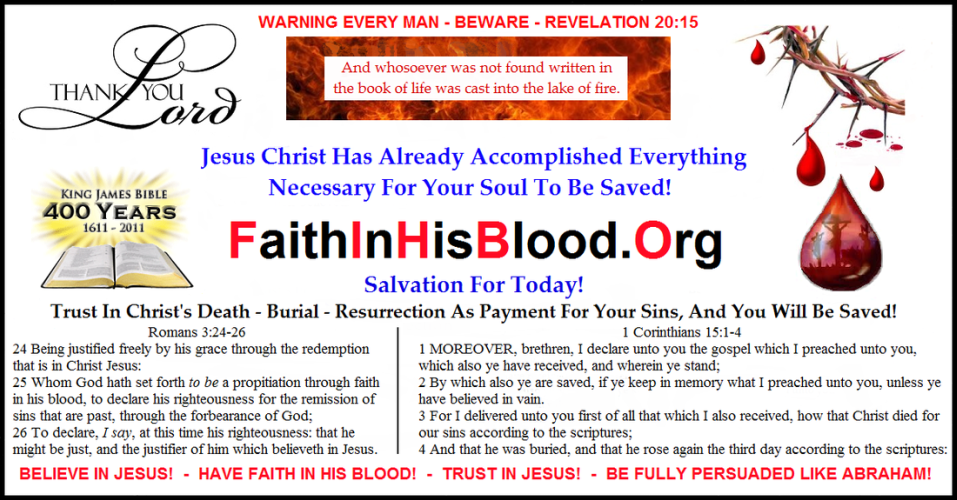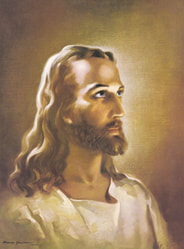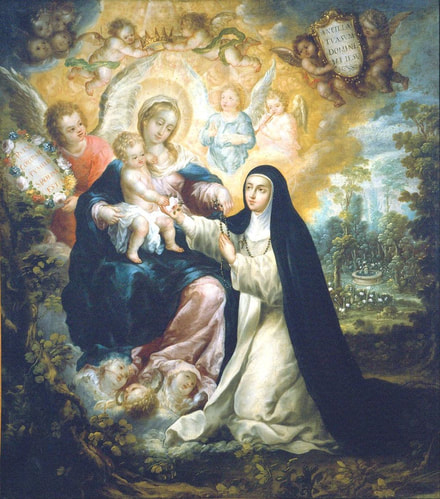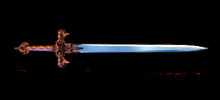|
The below article is from
"THE CONVERSATION" |
|
The Portrayal Of Jesus As A White
The portrayal of Jesus as a white, European man has come under renewed scrutiny during this period of introspection over the legacy of racism in society.
As protesters called for the removal of Confederate statues in the U.S., activist Shaun King went further, suggesting that murals and artwork depicting “white Jesus” should “come down.”
His concerns about the depiction of Christ and how it is used to uphold notions of white supremacy are not isolated. Prominent scholars and the archbishop of Canterbury have called to reconsider Jesus’ portrayal as a white man.
As a European Renaissance art historian, I study the evolving image of Jesus Christ from A.D. 1350 to 1600. Some of the best-known depictions of Christ, from Leonardo da Vinci’s “Last Supper” to Michelangelo’s “Last Judgment” in the Sistine Chapel, were produced during this period.
But the all-time most-reproduced image of Jesus comes from another period. It is Warner Sallman’s light-eyed, light-haired “Head of Christ” from 1940. Sallman, a former commercial artist who created art for advertising campaigns, successfully marketed this picture worldwide.
Through Sallman’s partnerships with two Christian publishing companies, one Protestant and one Catholic, the Head of Christ came to be included on everything from prayer cards to stained glass, faux oil paintings, calendars, hymnals and night lights.
Sallman’s painting culminates a long tradition of white Europeans creating and disseminating pictures of Christ made in their own image.
As protesters called for the removal of Confederate statues in the U.S., activist Shaun King went further, suggesting that murals and artwork depicting “white Jesus” should “come down.”
His concerns about the depiction of Christ and how it is used to uphold notions of white supremacy are not isolated. Prominent scholars and the archbishop of Canterbury have called to reconsider Jesus’ portrayal as a white man.
As a European Renaissance art historian, I study the evolving image of Jesus Christ from A.D. 1350 to 1600. Some of the best-known depictions of Christ, from Leonardo da Vinci’s “Last Supper” to Michelangelo’s “Last Judgment” in the Sistine Chapel, were produced during this period.
But the all-time most-reproduced image of Jesus comes from another period. It is Warner Sallman’s light-eyed, light-haired “Head of Christ” from 1940. Sallman, a former commercial artist who created art for advertising campaigns, successfully marketed this picture worldwide.
Through Sallman’s partnerships with two Christian publishing companies, one Protestant and one Catholic, the Head of Christ came to be included on everything from prayer cards to stained glass, faux oil paintings, calendars, hymnals and night lights.
Sallman’s painting culminates a long tradition of white Europeans creating and disseminating pictures of Christ made in their own image.
|
Through Sallman’s partnerships with two Christian publishing companies, one Protestant and one Catholic, the Head of Christ came to be included on everything from prayer cards to stained glass, faux oil paintings, calendars, hymnals and night lights.
Sallman’s painting culminates a long tradition of white Europeans creating and disseminating pictures of Christ made in their own image. |
In Search Of The Holy Face
The historical Jesus likely had the brown eyes and skin of other first-century Jews from Galilee, a region in biblical Israel. But no one knows exactly what Jesus looked like. There are no known images of Jesus from his lifetime, and while the Old Testament Kings Saul and David are explicitly called tall and handsome in the Bible, there is little indication of Jesus’ appearance in the Old or New Testaments.
|
Even these texts are contradictory: The Old Testament prophet Isaiah reads that the coming savior “had no beauty or majesty,” while the Book of Psalms claims he was “fairer than the children of men,” the word “fair” referring to physical beauty.
The earliest images of Jesus Christ emerged in the first through third centuries A.D., amidst concerns about idolatry. They were less about capturing the actual appearance of Christ than about clarifying his role as a ruler or as a savior. |
To clearly indicate these roles, early Christian artists often relied on syncretism, meaning they combined visual formats from other cultures.
Probably the most popular syncretic image is Christ as the Good Shepherd, a beardless, youthful figure based on pagan representations of Orpheus, Hermes and Apollo.
In other common depictions, Christ wears the toga or other attributes of the emperor. The theologian Richard Viladesau argues that the mature bearded Christ, with long hair in the “Syrian” style, combines characteristics of the Greek god Zeus and the Old Testament figure Samson, among others.
Probably the most popular syncretic image is Christ as the Good Shepherd, a beardless, youthful figure based on pagan representations of Orpheus, Hermes and Apollo.
In other common depictions, Christ wears the toga or other attributes of the emperor. The theologian Richard Viladesau argues that the mature bearded Christ, with long hair in the “Syrian” style, combines characteristics of the Greek god Zeus and the Old Testament figure Samson, among others.
Christ As Self-Portraitist
The first portraits of Christ, in the sense of authoritative likenesses, were believed to be self-portraits: the miraculous “image not made by human hands,” or acheiropoietos.
|
This belief originated in the seventh century A.D., based on a legend that Christ healed King Abgar of Edessa in modern-day Urfa, Turkey, through a miraculous image of his face, now known as the Mandylion.
A similar legend adopted by Western Christianity between the 11th and 14th centuries recounts how, before his death by crucifixion, Christ left an impression of his face on the veil of Saint Veronica, an image known as the volto santo, or “Holy Face.” |
|
These two images, along with other similar relics, have formed the basis of iconic traditions about the “true image” of Christ.
From the perspective of art history, these artifacts reinforced an already standardized image of a bearded Christ with shoulder-length, dark hair. In the Renaissance, European artists began to combine the icon and the portrait, making Christ in their own likeness. This happened for a variety of reasons, from identifying with the human suffering of Christ to commenting on one’s own creative power. |
|
The 15th-century Sicilian painter Antonello da Messina, for example, painted small pictures of the suffering Christ formatted exactly like his portraits of regular people, with the subject positioned between a fictive parapet and a plain black background and signed “Antonello da Messina painted me.”
The 16th-century German artist Albrecht Dürer blurred the line between the holy face and his own image in a famous self-portrait of 1500. In this, he posed frontally like an icon, with his beard and luxuriant shoulder-length hair recalling Christ’s. The “AD” monogram could stand equally for “Albrecht Dürer” or “Anno Domini” – “in the year of our Lord.” |
In Whose Image?
This phenomenon was not restricted to Europe: There are 16th- and 17th-century pictures of Jesus with, for example, Ethiopian and Indian features.
In Europe, however, the image of a light-skinned European Christ began to influence other parts of the world through European trade and colonization.
In Europe, however, the image of a light-skinned European Christ began to influence other parts of the world through European trade and colonization.
|
The Italian painter Andrea Mantegna’s “Adoration of the Magi” from A.D. 1505 features three distinct magi, who, according to one contemporary tradition, came from Africa, the Middle East and Asia. They present expensive objects of porcelain, agate and brass that would have been prized imports from China and the Persian and Ottoman empires.
|
But Jesus’ light skin and blues eyes suggest that he is not Middle Eastern but European-born. And the faux-Hebrew script embroidered on Mary’s cuffs and hemline belie a complicated relationship to the Judaism of the Holy Family.
In Mantegna’s Italy, anti-Semitic myths were already prevalent among the majority Christian population, with Jewish people often segregated to their own quarters of major cities.
Artists tried to distance Jesus and his parents from their Jewishness. Even seemingly small attributes like pierced ears – earrings were associated with Jewish women, their removal with a conversion to Christianity – could represent a transition toward the Christianity represented by Jesus.
Much later, anti-Semitic forces in Europe including the Nazis would attempt to divorce Jesus totally from his Judaism in favor of an Aryan stereotype.
In Mantegna’s Italy, anti-Semitic myths were already prevalent among the majority Christian population, with Jewish people often segregated to their own quarters of major cities.
Artists tried to distance Jesus and his parents from their Jewishness. Even seemingly small attributes like pierced ears – earrings were associated with Jewish women, their removal with a conversion to Christianity – could represent a transition toward the Christianity represented by Jesus.
Much later, anti-Semitic forces in Europe including the Nazis would attempt to divorce Jesus totally from his Judaism in favor of an Aryan stereotype.
White Jesus Abroad
As Europeans colonized increasingly farther-flung lands, they brought a European Jesus with them. Jesuit missionaries established painting schools that taught new converts Christian art in a European mode.
A small altarpiece made in the school of Giovanni Niccolò, the Italian Jesuit who founded the “Seminary of Painters” in Kumamoto, Japan, around 1590, combines a traditional Japanese gilt and mother-of-pearl shrine with a painting of a distinctly white, European Madonna and Child.
A small altarpiece made in the school of Giovanni Niccolò, the Italian Jesuit who founded the “Seminary of Painters” in Kumamoto, Japan, around 1590, combines a traditional Japanese gilt and mother-of-pearl shrine with a painting of a distinctly white, European Madonna and Child.
|
In colonial Latin America – called “New Spain” by European colonists – images of a white Jesus reinforced a caste system where white, Christian Europeans occupied the top tier, while those with darker skin from perceived intermixing with native populations ranked considerably lower.
Artist Nicolas Correa’s 1695 painting of Saint Rose of Lima, the first Catholic saint born in “New Spain,” shows her metaphorical marriage to a blond, light-skinned Christ. |
Legacies Of Likeness
Scholar Edward J. Blum and Paul Harvey argue that in the centuries after European colonization of the Americas, the image of a white Christ associated him with the logic of empire and could be used to justify the oppression of Native and African Americans.
In a multiracial but unequal America, there was a disproportionate representation of a white Jesus in the media. It wasn’t only Warner Sallman’s Head of Christ that was depicted widely; a large proportion of actors who have played Jesus on television and film have been white with blue eyes.
Pictures of Jesus historically have served many purposes, from symbolically presenting his power to depicting his actual likeness. But representation matters, and viewers need to understand the complicated history of the images of Christ they consume.
In a multiracial but unequal America, there was a disproportionate representation of a white Jesus in the media. It wasn’t only Warner Sallman’s Head of Christ that was depicted widely; a large proportion of actors who have played Jesus on television and film have been white with blue eyes.
Pictures of Jesus historically have served many purposes, from symbolically presenting his power to depicting his actual likeness. But representation matters, and viewers need to understand the complicated history of the images of Christ they consume.
Faith In His Blood . Org Note!
What does the Bible say about how Jesus looked?
Bible verses related to What Jesus Looked Like from The King James Holy Bible!
Revelation 1:15 (Heavenly)
15 And his feet like unto fine brass, as if they burned in a furnace; and his voice as the sound of many waters.
Isaiah 53:2 (Earthly)
2 For he shall grow up before him as a tender plant, and as a root out of a dry ground: he hath no form nor comeliness; and when we shall see him, there is no beauty that we should desire him.
Revelation 1:13-14 (Heavenly)
13 And in the midst of the seven candlesticks one like unto the Son of man, clothed with a garment down to the foot, and girt about the paps with a golden girdle.
14 His head and his hairs were white like wool, as white as snow; and his eyes were as a flame of fire;
Daniel 10:5-6 (Heavenly)
5 Then I lifted up mine eyes, and looked, and behold a certain man clothed in linen, whose loins were girded with fine gold of Uphaz:
6 His body also was like the beryl, and his face as the appearance of lightning, and his eyes as lamps of fire, and his arms and his feet like in colour to polished brass, and the voice of his words like the voice of a multitude.
Daniel 7:9 (Heavenly)
9 I beheld till the thrones were cast down, and the Ancient of days did sit, whose garment was white as snow, and the hair of his head like the pure wool: his throne was like the fiery flame, and his wheels as burning fire.
Isaiah 52:14 (Earthly)
14 As many were astonied at thee; his visage was so marred more than any man, and his form more than the sons of men:
Genesis 49:10-12 (Heavenly)
10 The sceptre shall not depart from Judah, nor a lawgiver from between his feet, until Shiloh come; and unto him shall the gathering of the people be.
11 Binding his foal unto the vine, and his ass's colt unto the choice vine; he washed his garments in wine, and his clothes in the blood of grapes:
12 His eyes shall be red with wine, and his teeth white with milk.
Ezekiel 40:3 (Heavenly)
3 And he brought me thither, and, behold, there was a man, whose appearance was like the appearance of brass, with a line of flax in his hand, and a measuring reed; and he stood in the gate.
1 Corinthians 11:14 (Earthly)
14 Doth not even nature itself teach you, that, if a man have long hair, it is a shame unto him?
Isaiah 53:1-12 (Earthly)
1 Who hath believed our report? and to whom is the arm of the LORD revealed?
2 For he shall grow up before him as a tender plant, and as a root out of a dry ground: he hath no form nor comeliness; and when we shall see him, there is no beauty that we should desire him.
3 He is despised and rejected of men; a man of sorrows, and acquainted with grief: and we hid as it were our faces from him; he was despised, and we esteemed him not.
4 Surely he hath borne our griefs, and carried our sorrows: yet we did esteem him stricken, smitten of God, and afflicted.
5 But he was wounded for our transgressions, he was bruised for our iniquities: the chastisement of our peace was upon him; and with his stripes we are healed.
6 All we like sheep have gone astray; we have turned every one to his own way; and the LORD hath laid on him the iniquity of us all.
7 He was oppressed, and he was afflicted, yet he opened not his mouth: he is brought as a lamb to the slaughter, and as a sheep before her shearers is dumb, so he openeth not his mouth.
8 He was taken from prison and from judgment: and who shall declare his generation? for he was cut off out of the land of the living: for the transgression of my people was he stricken.
9 And he made his grave with the wicked, and with the rich in his death; because he had done no violence, neither was any deceit in his mouth.
10 Yet it pleased the LORD to bruise him; he hath put him to grief: when thou shalt make his soul an offering for sin, he shall see his seed, he shall prolong his days, and the pleasure of the LORD shall prosper in his hand.
11 He shall see of the travail of his soul, and shall be satisfied: by his knowledge shall my righteous servant justify many; for he shall bear their iniquities.
12 Therefore will I divide him a portion with the great, and he shall divide the spoil with the strong; because he hath poured out his soul unto death: and he was numbered with the transgressors; and he bare the sin of many, and made intercession for the transgressors.
Revelation 1:15 (Heavenly)
15 And his feet like unto fine brass, as if they burned in a furnace; and his voice as the sound of many waters.
Isaiah 53:2 (Earthly)
2 For he shall grow up before him as a tender plant, and as a root out of a dry ground: he hath no form nor comeliness; and when we shall see him, there is no beauty that we should desire him.
Revelation 1:13-14 (Heavenly)
13 And in the midst of the seven candlesticks one like unto the Son of man, clothed with a garment down to the foot, and girt about the paps with a golden girdle.
14 His head and his hairs were white like wool, as white as snow; and his eyes were as a flame of fire;
Daniel 10:5-6 (Heavenly)
5 Then I lifted up mine eyes, and looked, and behold a certain man clothed in linen, whose loins were girded with fine gold of Uphaz:
6 His body also was like the beryl, and his face as the appearance of lightning, and his eyes as lamps of fire, and his arms and his feet like in colour to polished brass, and the voice of his words like the voice of a multitude.
Daniel 7:9 (Heavenly)
9 I beheld till the thrones were cast down, and the Ancient of days did sit, whose garment was white as snow, and the hair of his head like the pure wool: his throne was like the fiery flame, and his wheels as burning fire.
Isaiah 52:14 (Earthly)
14 As many were astonied at thee; his visage was so marred more than any man, and his form more than the sons of men:
Genesis 49:10-12 (Heavenly)
10 The sceptre shall not depart from Judah, nor a lawgiver from between his feet, until Shiloh come; and unto him shall the gathering of the people be.
11 Binding his foal unto the vine, and his ass's colt unto the choice vine; he washed his garments in wine, and his clothes in the blood of grapes:
12 His eyes shall be red with wine, and his teeth white with milk.
Ezekiel 40:3 (Heavenly)
3 And he brought me thither, and, behold, there was a man, whose appearance was like the appearance of brass, with a line of flax in his hand, and a measuring reed; and he stood in the gate.
1 Corinthians 11:14 (Earthly)
14 Doth not even nature itself teach you, that, if a man have long hair, it is a shame unto him?
Isaiah 53:1-12 (Earthly)
1 Who hath believed our report? and to whom is the arm of the LORD revealed?
2 For he shall grow up before him as a tender plant, and as a root out of a dry ground: he hath no form nor comeliness; and when we shall see him, there is no beauty that we should desire him.
3 He is despised and rejected of men; a man of sorrows, and acquainted with grief: and we hid as it were our faces from him; he was despised, and we esteemed him not.
4 Surely he hath borne our griefs, and carried our sorrows: yet we did esteem him stricken, smitten of God, and afflicted.
5 But he was wounded for our transgressions, he was bruised for our iniquities: the chastisement of our peace was upon him; and with his stripes we are healed.
6 All we like sheep have gone astray; we have turned every one to his own way; and the LORD hath laid on him the iniquity of us all.
7 He was oppressed, and he was afflicted, yet he opened not his mouth: he is brought as a lamb to the slaughter, and as a sheep before her shearers is dumb, so he openeth not his mouth.
8 He was taken from prison and from judgment: and who shall declare his generation? for he was cut off out of the land of the living: for the transgression of my people was he stricken.
9 And he made his grave with the wicked, and with the rich in his death; because he had done no violence, neither was any deceit in his mouth.
10 Yet it pleased the LORD to bruise him; he hath put him to grief: when thou shalt make his soul an offering for sin, he shall see his seed, he shall prolong his days, and the pleasure of the LORD shall prosper in his hand.
11 He shall see of the travail of his soul, and shall be satisfied: by his knowledge shall my righteous servant justify many; for he shall bear their iniquities.
12 Therefore will I divide him a portion with the great, and he shall divide the spoil with the strong; because he hath poured out his soul unto death: and he was numbered with the transgressors; and he bare the sin of many, and made intercession for the transgressors.
I KNOW WHAT THE UNPARDONABLE SIN IS!
DO YOU?
Matthew 12:31-32
31 Wherefore I say unto you, All manner of sin and blasphemy shall be forgiven unto men: but the blasphemy against the Holy Ghost shall not be forgiven unto men.
32 And whosoever speaketh a word against the Son of man, it shall be forgiven him: but whosoever speaketh against the Holy Ghost, it shall not be forgiven him, neither in this world, neither in the world to come.
31 Wherefore I say unto you, All manner of sin and blasphemy shall be forgiven unto men: but the blasphemy against the Holy Ghost shall not be forgiven unto men.
32 And whosoever speaketh a word against the Son of man, it shall be forgiven him: but whosoever speaketh against the Holy Ghost, it shall not be forgiven him, neither in this world, neither in the world to come.
IT IS THIS: The Holy Spirit comes to you, and testifies to you there was only one man that ever lived who is able to make things square between you and God. The Holy Spirit teachers you about The Lord Jesus Christ with overwhelming evidence, yet, you reject this testimony from The Holy Spirit. You then "speak against" The Holy Spirit, and refuse to believe what The Lord Jesus Christ did for you on The Cross. This, God will not pardon.
Acts 4:10-12
10 Be it known unto you all, and to all the people of Israel, that by the name of Jesus Christ of Nazareth, whom ye crucified, whom God raised from the dead, even by him doth this man stand here before you whole.
11 This is the stone which was set at nought of you builders, which is become the head of the corner.
12 Neither is there salvation in any other: for there is none other name under heaven given among men, whereby we must be saved.
10 Be it known unto you all, and to all the people of Israel, that by the name of Jesus Christ of Nazareth, whom ye crucified, whom God raised from the dead, even by him doth this man stand here before you whole.
11 This is the stone which was set at nought of you builders, which is become the head of the corner.
12 Neither is there salvation in any other: for there is none other name under heaven given among men, whereby we must be saved.
What Exactly Is The Unforgivable Sin?
The Mark Series Part 12
The Mark Series Part 12
A Bible Study By Pastor Mike Winger!
(1 Hour, 0 Minutes, 52 Seconds)
"What Exactly Is the Unforgivable Sin? The Mark Series Part 12!"
From (Mike Winger) of YouTube, Published on September 2, 2019
"What Exactly Is the Unforgivable Sin? The Mark Series Part 12!"
From (Mike Winger) of YouTube, Published on September 2, 2019
|
NOTE: IF YOU WANT ME TO REPLY TO YOUR SPEAK OUT ENTRY, USE THE CONTACT PAGE!
|
ONLY READ THE KING JAMES HOLY BIBLE (PCE)!
REVELATION 20:15


















